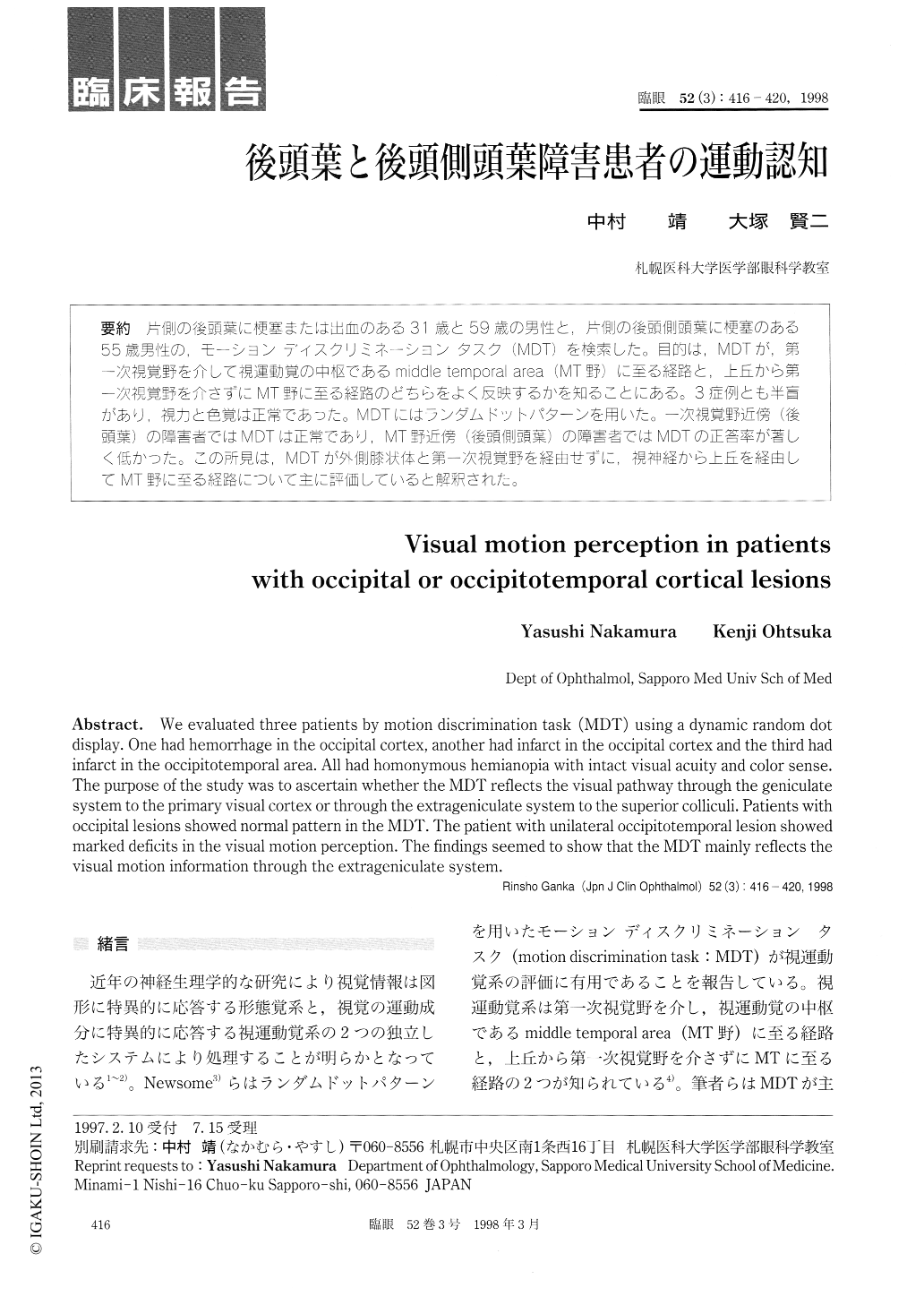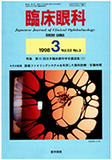Japanese
English
- 有料閲覧
- Abstract 文献概要
- 1ページ目 Look Inside
片側の後頭葉に梗塞または出血のある31歳と59歳の男性と,片側の後頭側頭葉に梗塞のある55歳男性の,モーションディスクリミネーションタスク(MDT)を検索した。目的は,MDTが,第一次視覚野を介して視運動覚の中枢であるmiddle temporal area (MT野)に至る経路と,上丘から第一次視覚野を介さずにMT野に至る経路のどちらをよく反映するかを知ることにある。3症例とも半盲があり,視力と色覚は正常であった。MDTにはランダムドットパターンを用いた。一次視覚野近傍(後頭葉)の障害者ではMDTは正常であり,MT野近傍(後頭側頭葉)の障害者ではMDTの正答率が著しく低かった。この所見は,MDTが外側膝状体と第一次視覚野を経由せずに,視神経から上丘を経由してMT野に至る経路について主に評価していると解釈された。
We evaluated three patients by motion discrimination task (MDT) using a dynamic random dot display. One had hemorrhage in the occipital cortex, another had infarct in the occipital cortex and the third had infarct in the occipitotemporal area. All had homonymous hemianopia with intact visual acuity and color sense. The purpose of the study was to ascertain whether the MDT reflects the visual pathway through the geniculate system to the primary visual cortex or through the extrageniculate system to the superior colliculi. Patients with occipital lesions showed normal pattern in the MDT. The patient with unilateral occipitotemporal lesion showed marked deficits in the visual motion perception. The findings seemed to show that the MDT mainly reflects the visual motion information through the extrageniculate system.

Copyright © 1998, Igaku-Shoin Ltd. All rights reserved.


